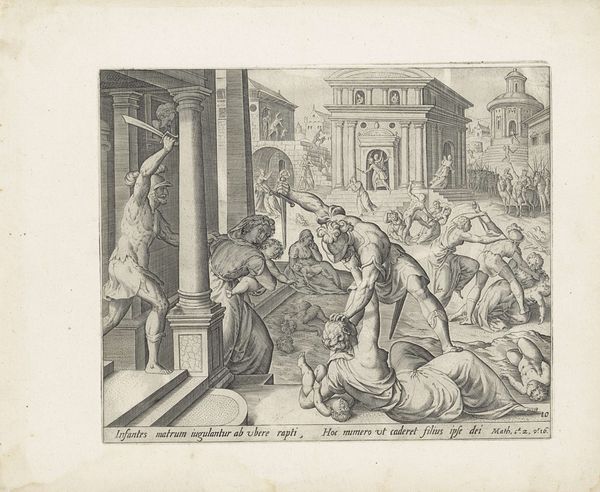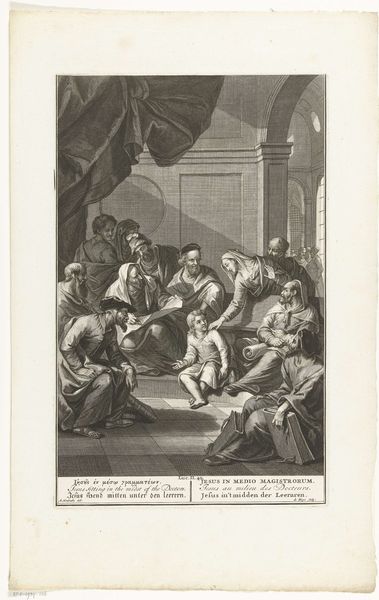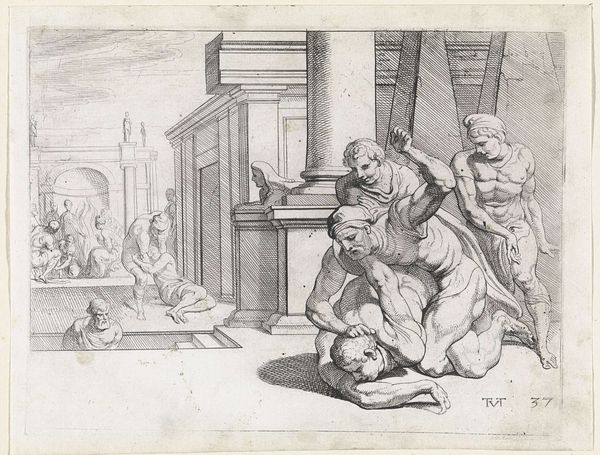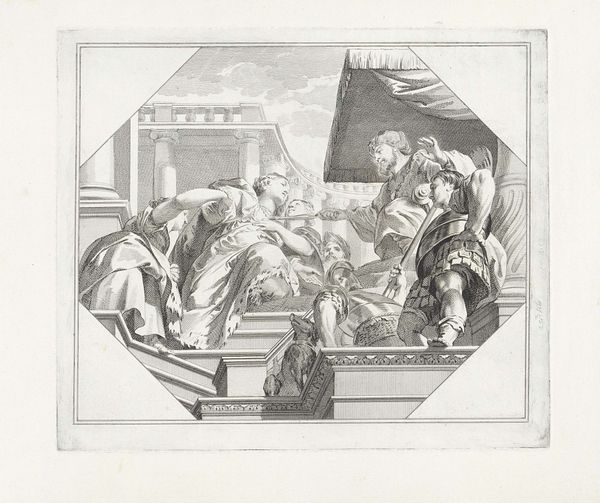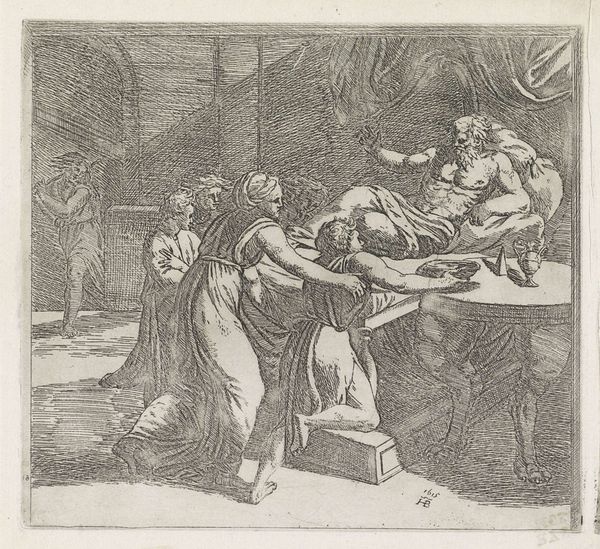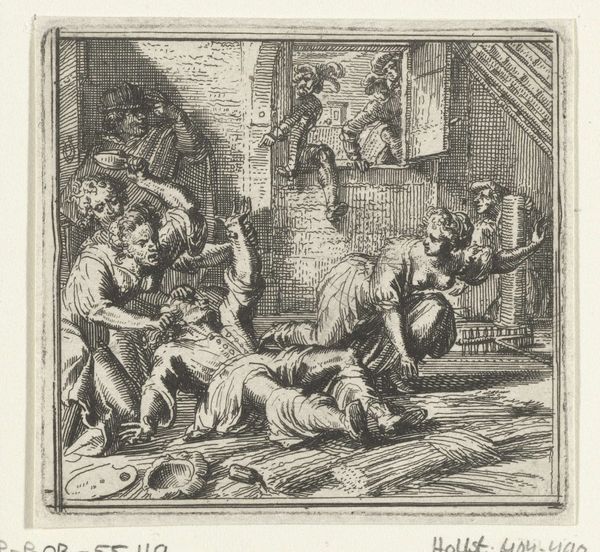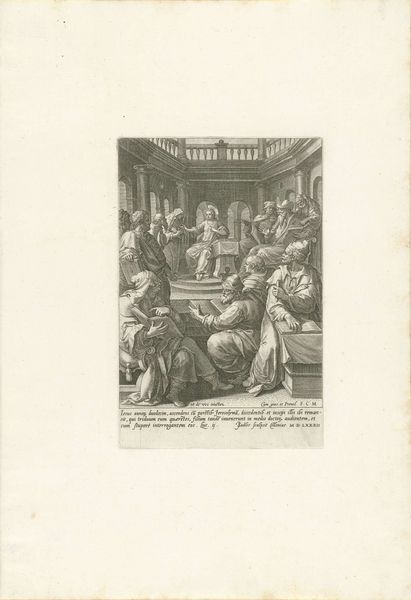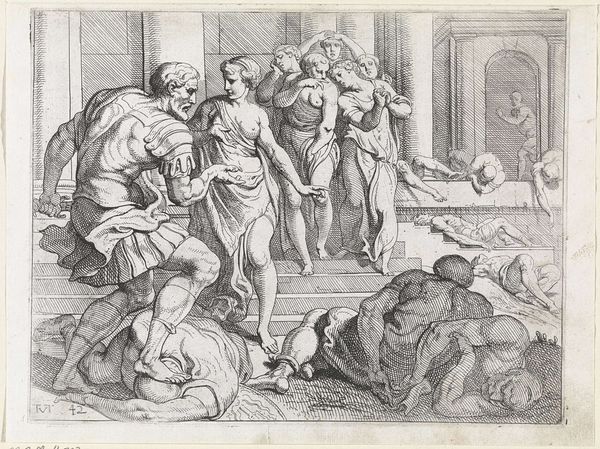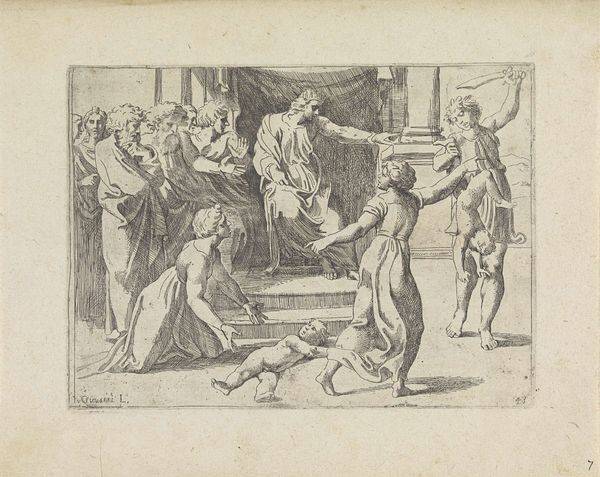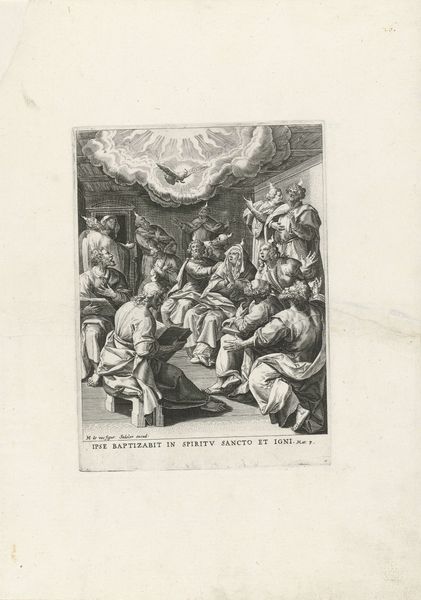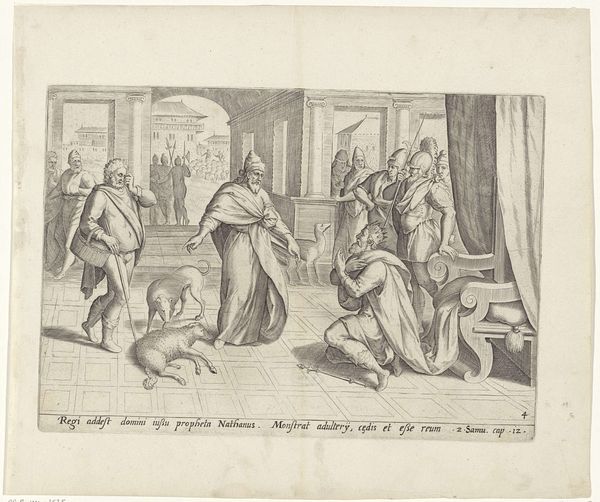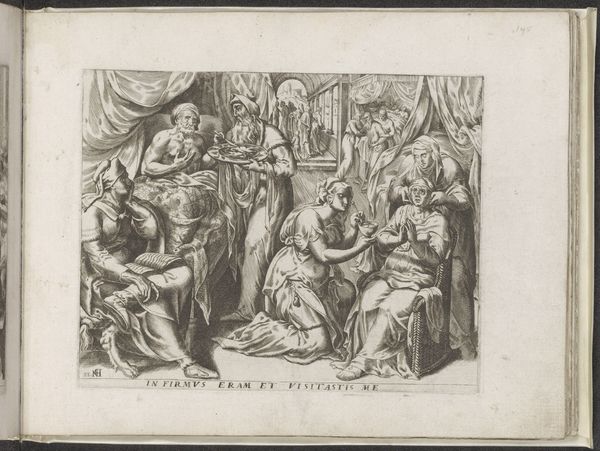
Dimensions: height 213 mm, width 270 mm
Copyright: Rijks Museum: Open Domain
Editor: So, this engraving by Philips Galle, from sometime between 1557 and 1591, is called "Boaz koopt het land van Ruth en Naomi." It's currently at the Rijksmuseum. The whole scene feels very deliberate, almost staged. Everyone is in their place. How do you interpret this work? Curator: The formality you perceive is very telling. Consider the symbolism inherent in a public transaction during this era. Notice how the act of Boaz buying the land is not just a business deal, but a re-establishment of order, a restoration of social and familial continuity. Editor: So the setting isn't just decorative? Curator: Precisely. The architectural backdrop, the arrangement of figures, and even the light and shadow, are all carefully orchestrated to convey a sense of gravitas and the weight of tradition. Look at the man removing his shoe. That symbolic act cements the deal. Editor: The shoe. I wouldn't have thought much about that. What does it signify? Curator: It's a powerful emblem of transfer, relinquishing a right or claim. This act carries within it cultural memory and continuity through visual symbols, steeped in historical context. The man removing his shoe indicates not just a legal agreement, but an acceptance of moral responsibility to preserve the lineage and heritage of Ruth and Naomi. Can you see how it resonates? Editor: Definitely. I initially just saw a crowded scene, but now it feels much more meaningful, laden with symbolism and cultural significance. Curator: Indeed. What appeared to be a historical snapshot is, in fact, a meticulously constructed tapestry of cultural values, historical consciousness, and the enduring power of symbolic action.
Comments
No comments
Be the first to comment and join the conversation on the ultimate creative platform.
